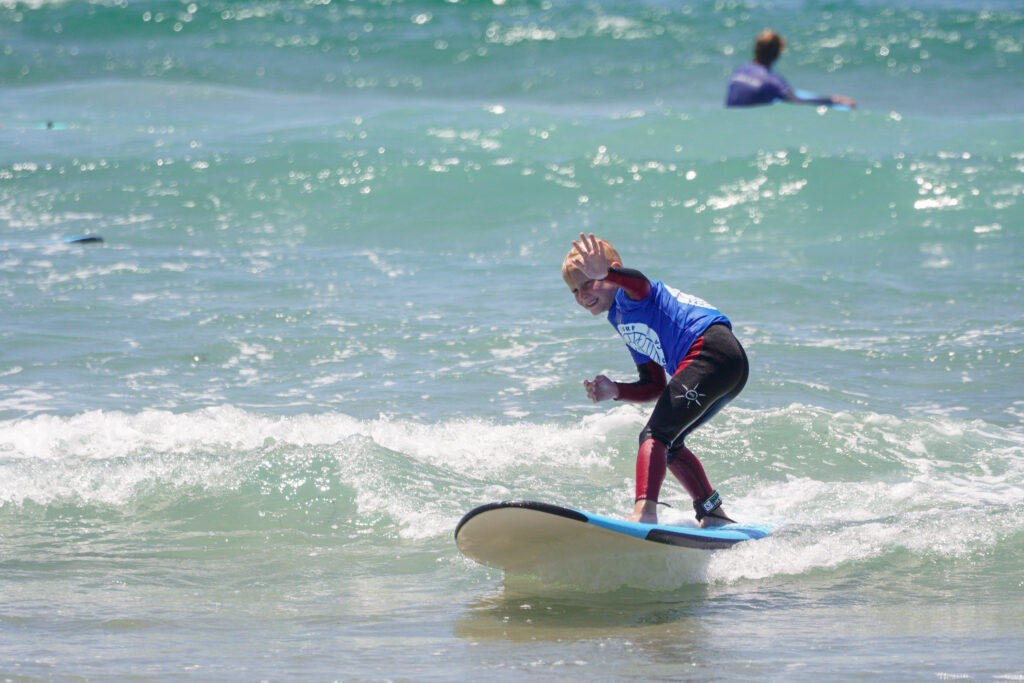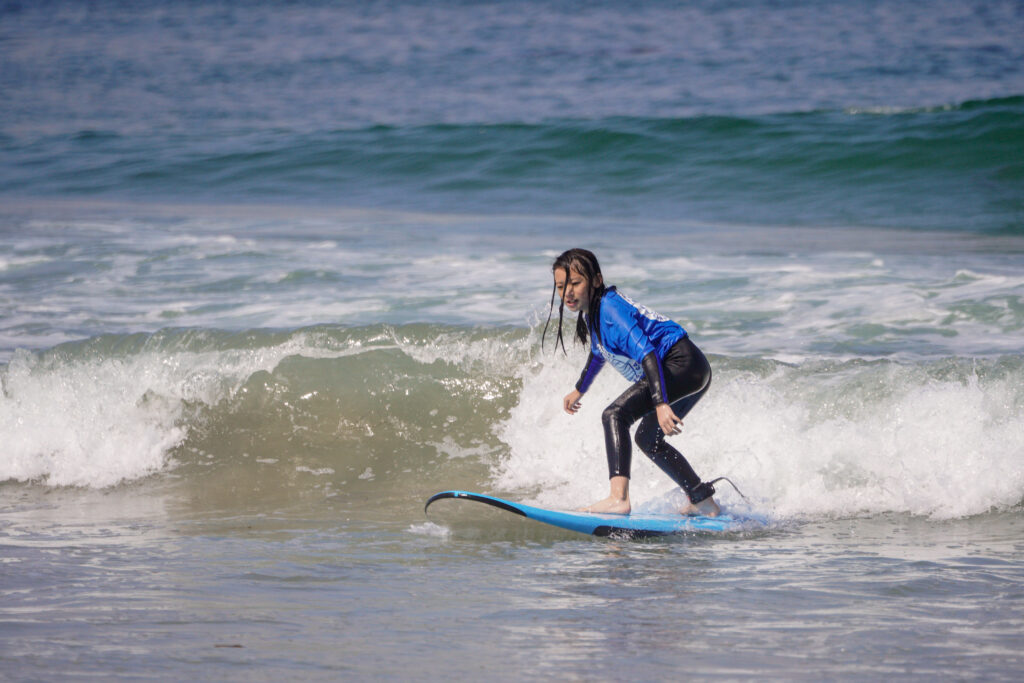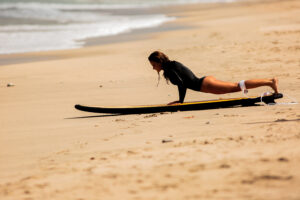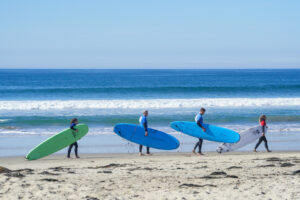For beginners in surfing, there’s a blend of excitement and challenge ahead. Mastering this sport goes beyond simply getting on a board, as it requires understanding essential fundamentals and avoiding common pitfalls that can hinder progress.
Below is a detailed list of the primary mistakes often made by surfing novices and that should be avoided.
9 Key Mistakes to Avoid for Beginners in Surfing
Within the surfing universe, it’s common for beginners to face challenges beyond simply getting on a board.
Below, are 9 common mistakes that novices encounter along with practical tips to avoid them. Mastering these techniques will not only enhance your surfing experience but also ensure smoother progression along the way.
Inappropriate surf spot selection is a common mistake among beginners in surfing
Many beginner surfers make the crucial mistake of choosing surf spots that are beyond their skill level. Opting for areas with large and powerful waves can result in intimidating and even dangerous experiences. Instead, it’s advisable to start at beaches with smaller and gentler waves, where it’s possible to practice safely and gain confidence gradually. Additionally, seeking guidance from local surfers or instructors can help identify the most suitable spots for beginners.

Inappropriate Equipment Usage
Choosing the right equipment is crucial for success in surfing, and many beginners make the mistake of selecting inadequate boards. Opting for a board that is too short or advanced can hinder learning and impede progression. It is recommended that beginners choose longer and more stable boards, such as foam boards or mini-malibus, which offer greater buoyancy and stability. Additionally, it is important to consider the sea conditions when selecting the appropriate equipment.
Incorrect Paddling Posture
Proper posture while paddling is essential for controlling the board and navigating through waves efficiently. Many beginners make the mistake of leaning too far forward or backward while paddling, which can disrupt balance and hinder progress in the water. The ideal posture involves keeping the body aligned, with weight evenly distributed on the board and shoulders relaxed. Practicing paddling techniques in calm waters can help improve posture and efficiency in the water.
Incorrect wave positioning is a typical error observed in beginners in surfing
Proper positioning on the wave is crucial for maximizing each surfing opportunity. Many beginners make the mistake of positioning themselves too far forward or too far back on the wave, which can result in loss of momentum and difficulty performing maneuvers. To maximize surfing time, it is important to learn to read the waves and position oneself correctly, staying close to the steepest part of the wave and adjusting position as necessary.
Lack of Knowledge about Surfing Etiquette
Respecting surfing etiquette is essential to ensure safety and harmony among surfers in the water. Unfortunately, many beginners are not aware of the basic etiquette rules, which can result in dangerous situations and unnecessary conflicts. It is crucial for newcomers to familiarize themselves with priority rules, such as who has the right of way on a wave, and how to avoid collisions. Additionally, maintaining a respectful attitude towards other surfers and the environment is important.
Fear of Falling and Drowning
Fear of falling and drowning is common among surfing beginners and can hinder progress in the water. However, letting this fear take over can damage confidence and the ability to learn new techniques. To overcome the fear of falling, it is important to practice safe falling techniques in shallow waters and become familiar with the aquatic environment. Additionally, using appropriate safety equipment, such as life jackets and leashes, can provide an additional layer of protection and peace of mind in the water.

Failure to Observe Sea Conditions
Ignoring sea conditions is a common mistake made by surfing beginners and can result in dangerous situations. Before entering the water, it is important to carefully observe sea conditions, including wave height and direction, current strength, and changes in tide. Being aware of sea conditions helps surfers make informed decisions about when and where to surf, ensuring a safer and more enjoyable experience in the water.
Impatience and unrealistic expectations are frequent challenges faced by beginners in surfing
Impatience and unrealistic expectations can hinder a beginner’s progress in surfing. Many newcomers expect to master surfing quickly and become frustrated when they realize that it takes time and practice to develop solid skills in the water. It’s important to set realistic expectations and understand that surfing is a challenging sport that requires time and dedication to master. Instead of focusing solely on immediate progress, beginners should embrace the learning process and celebrate each achievement along the way.
Lack of Practice Consistency
Regular practice is crucial for improvement in surfing, but many beginners make the mistake of not practicing frequently enough. Trying to surf only occasionally can result in slow progress and frustration in the water. To improve consistently, it’s important to establish a regular practice routine and dedicate time regularly to surfing. Even if sea conditions aren’t ideal, practicing basic skills like paddling and balancing on the board can help beginners build confidence and improve their technique.
Surf enthusiasts looking to enhance their skills have the opportunity to join Surf´N´Stay San Diego, a renowned surf camp with specialized surfing lessons. Located in Pacific Beach, the surf camp offers a unique experience for surfers of all levels, from beginners to advanced!





